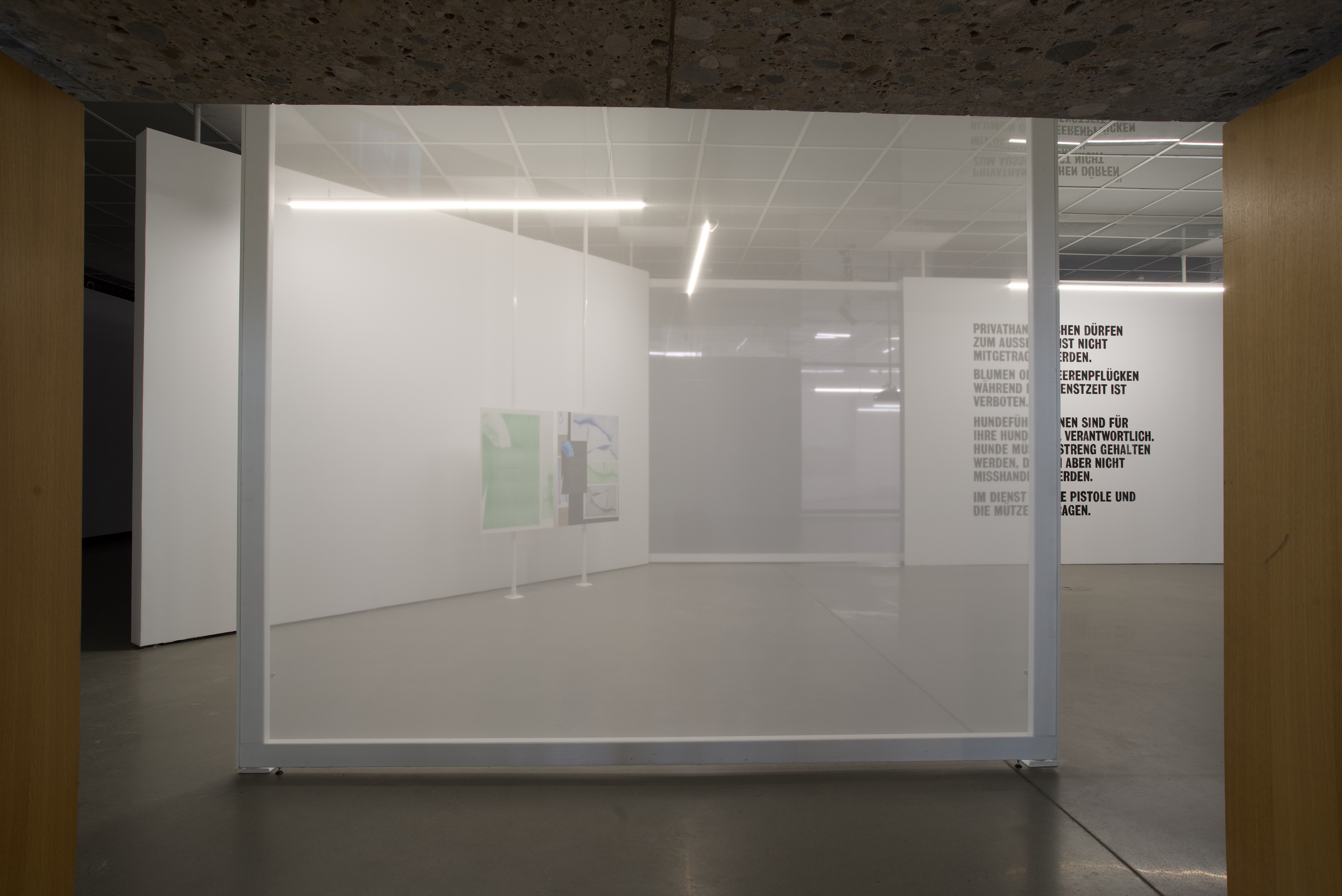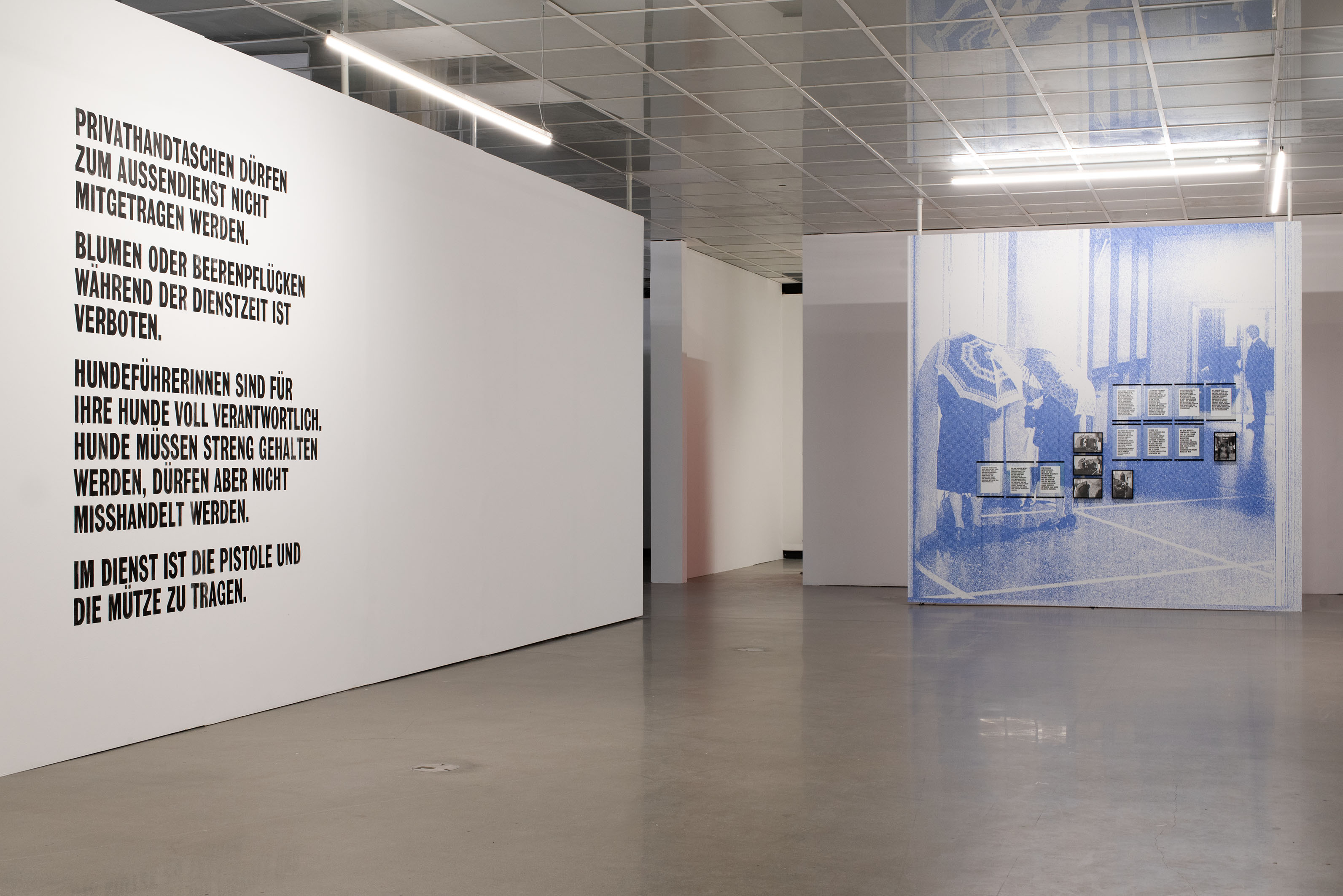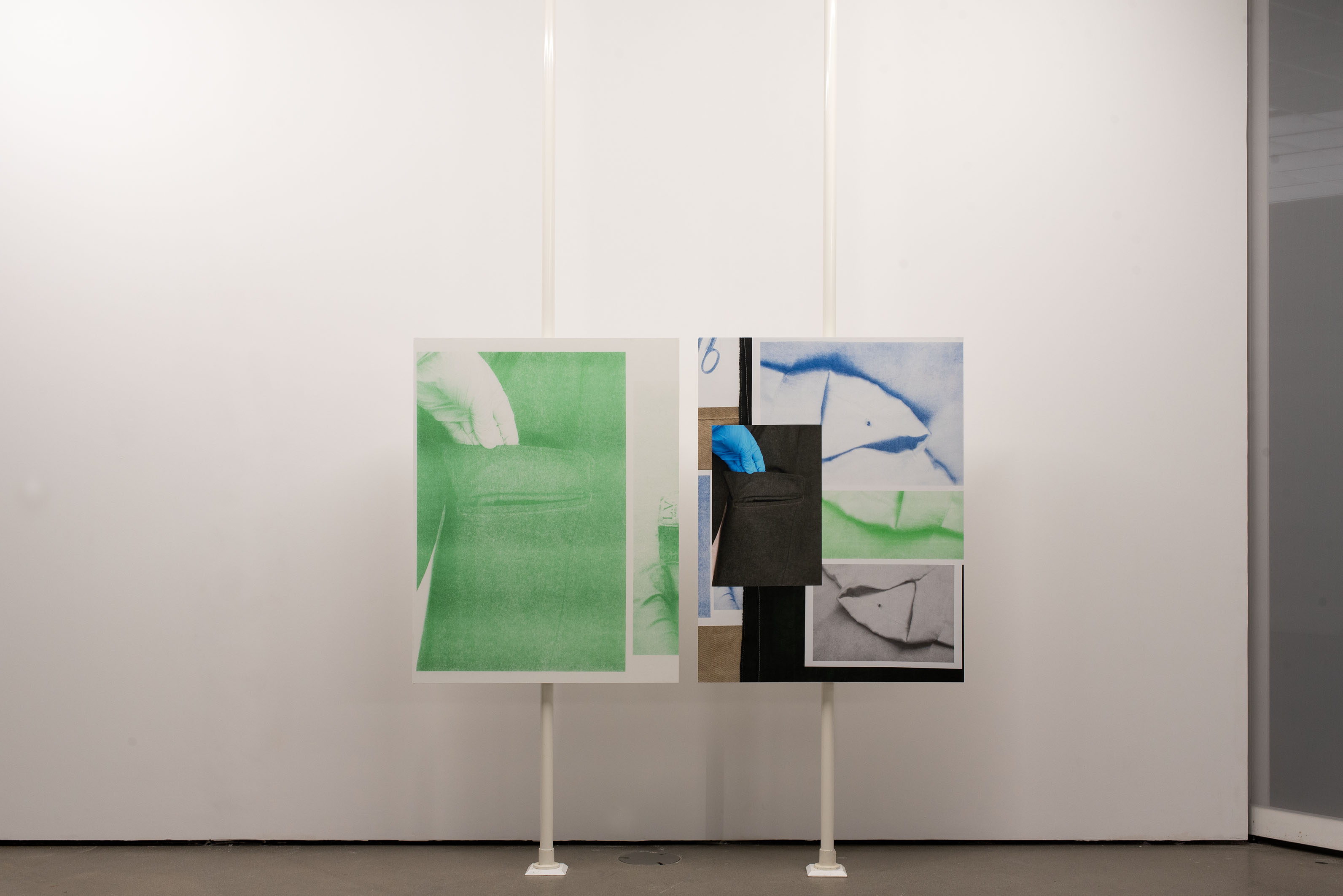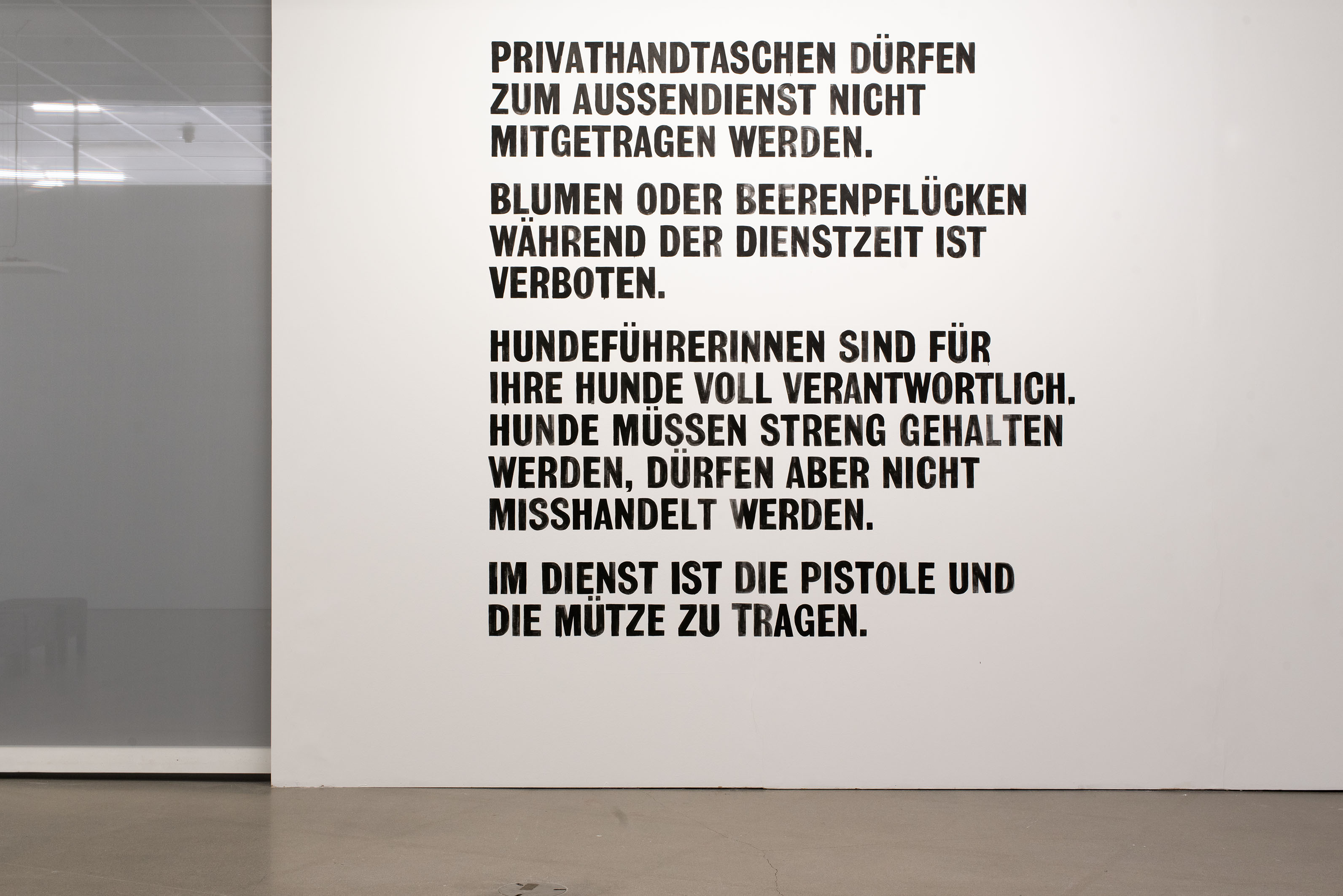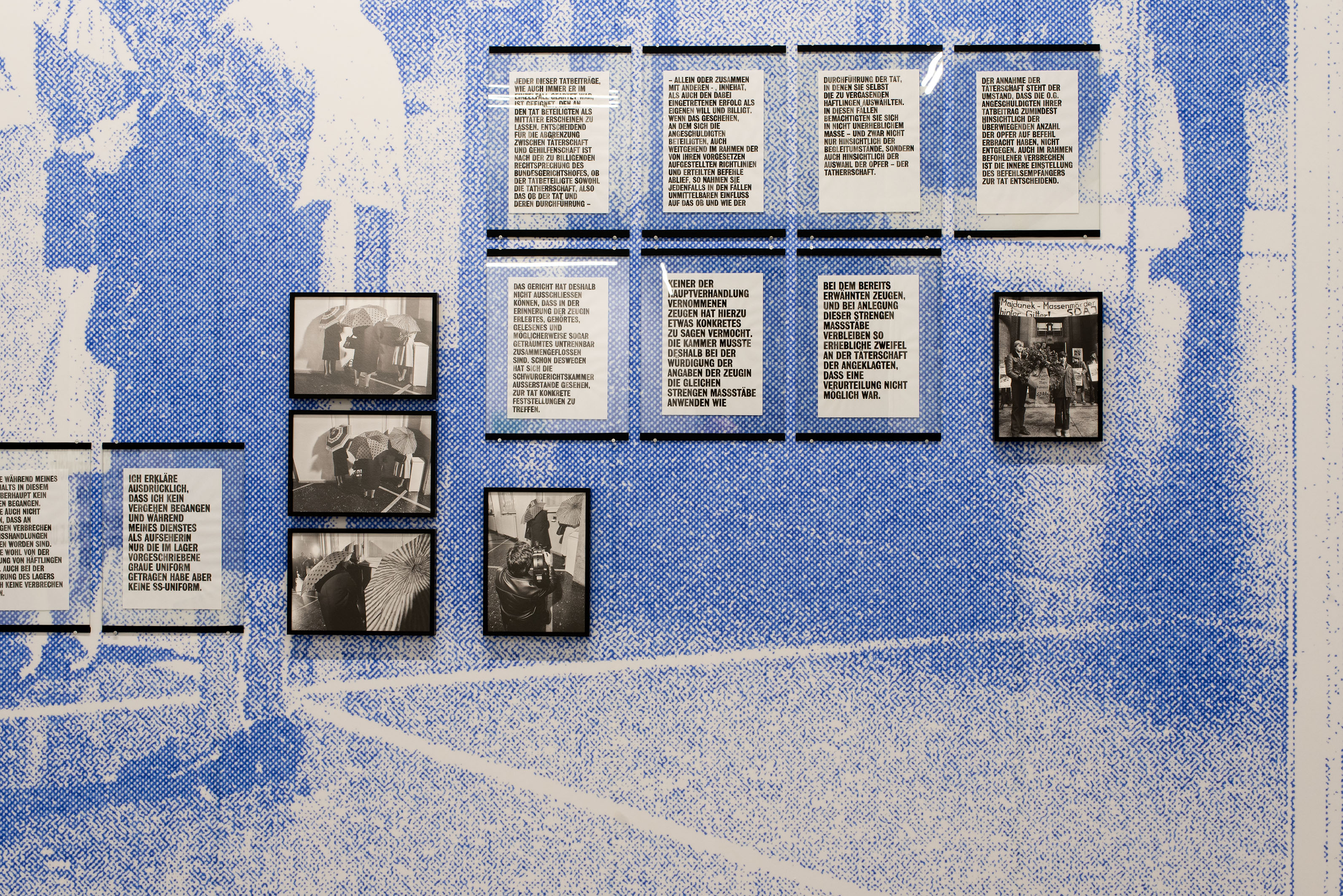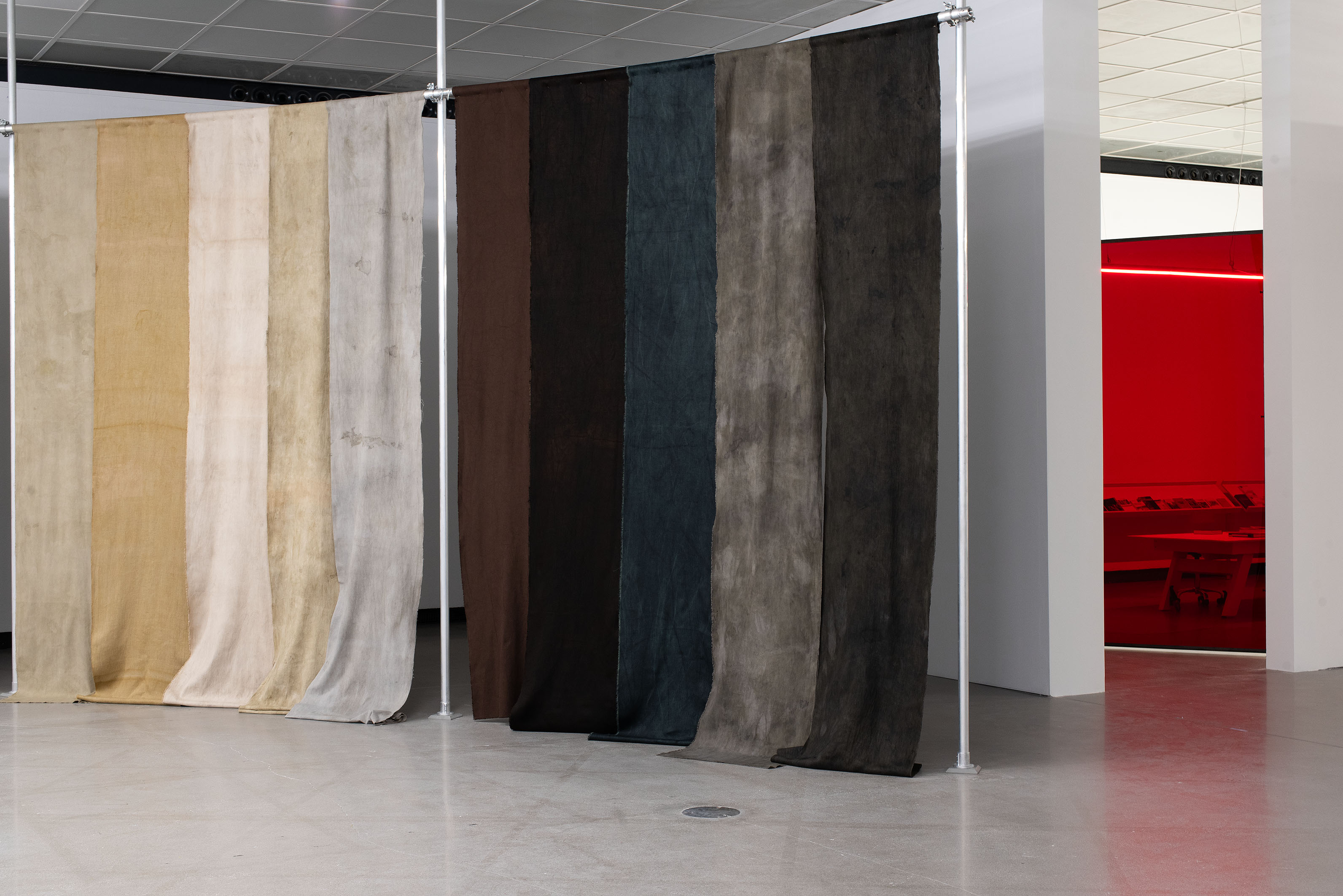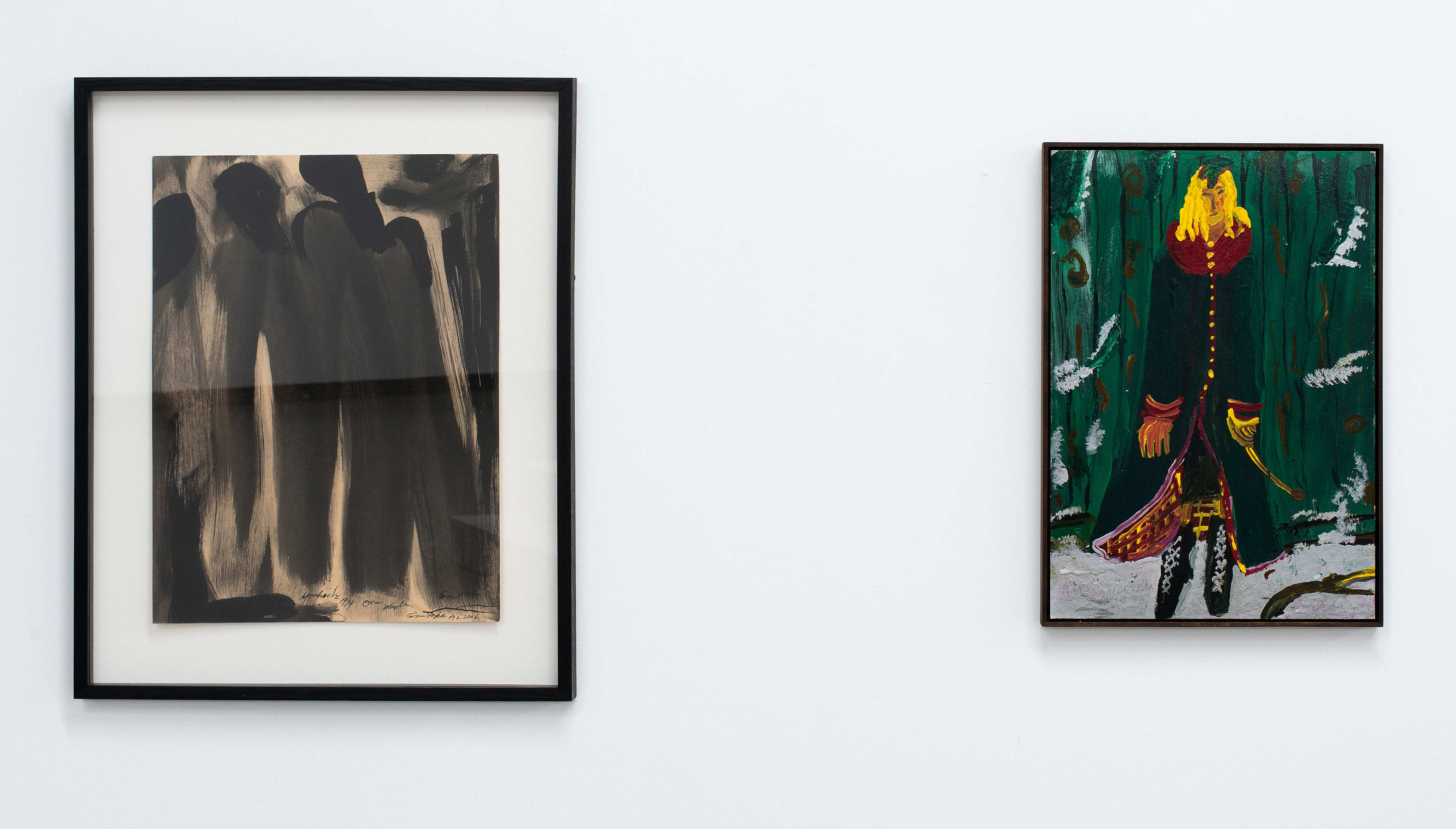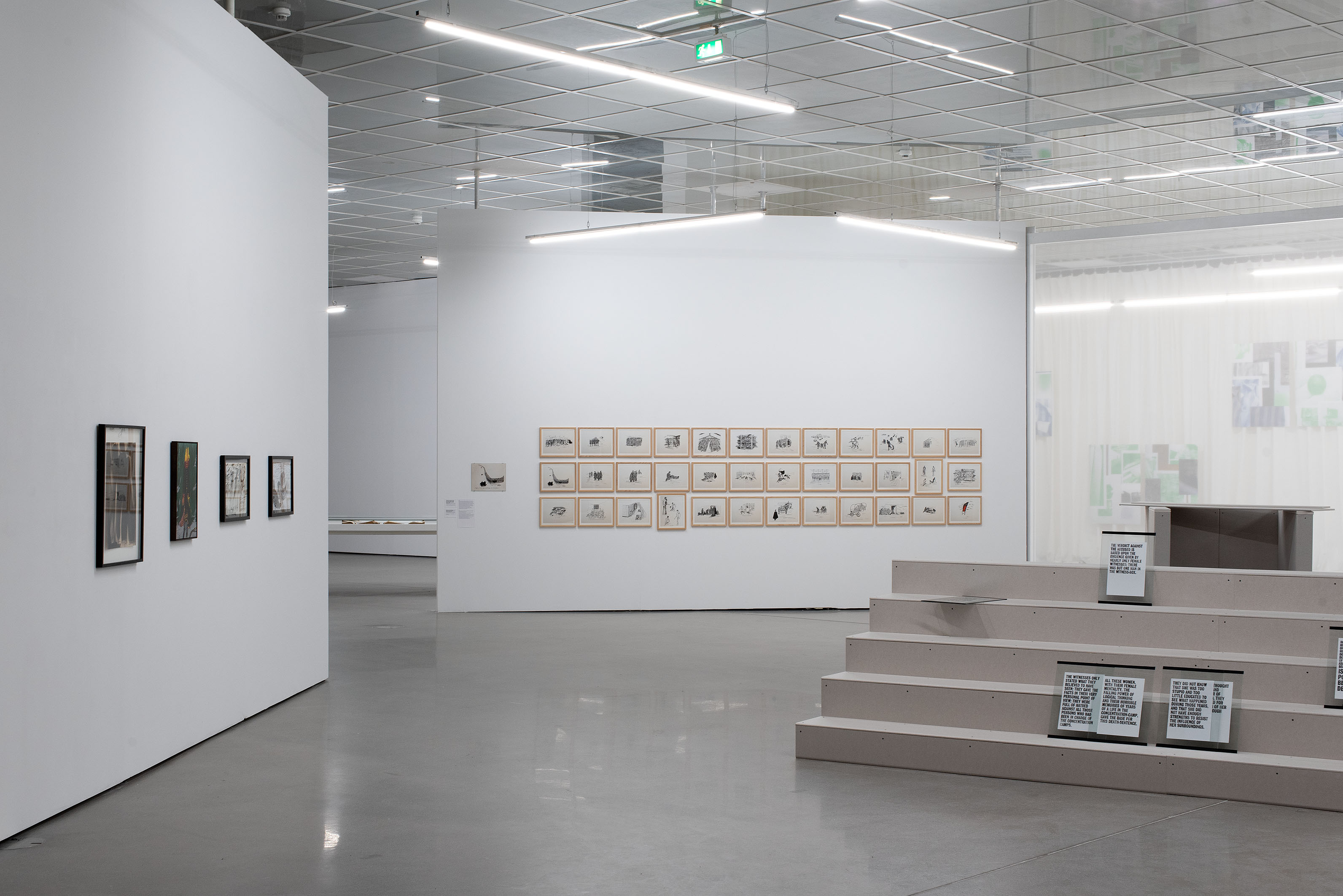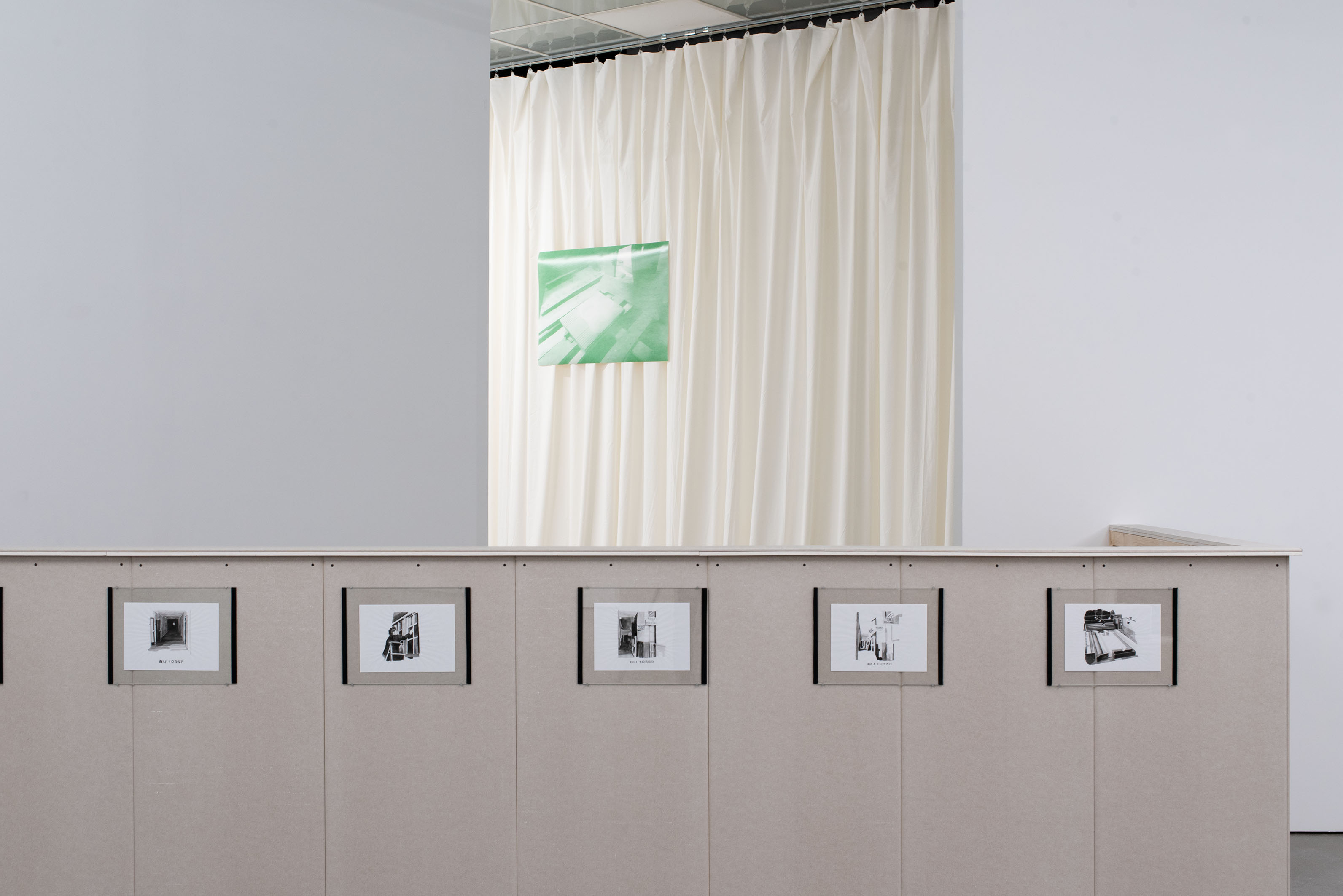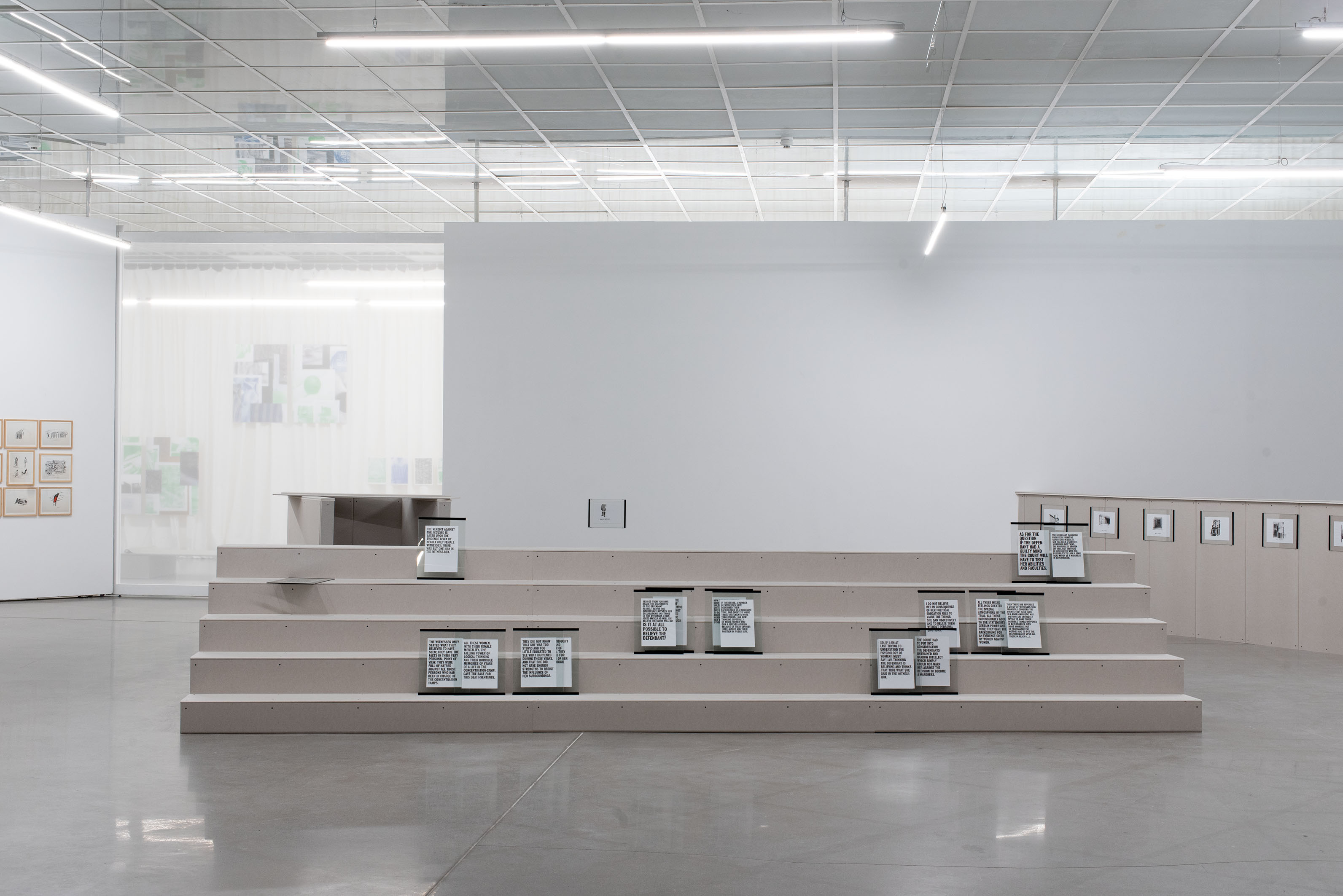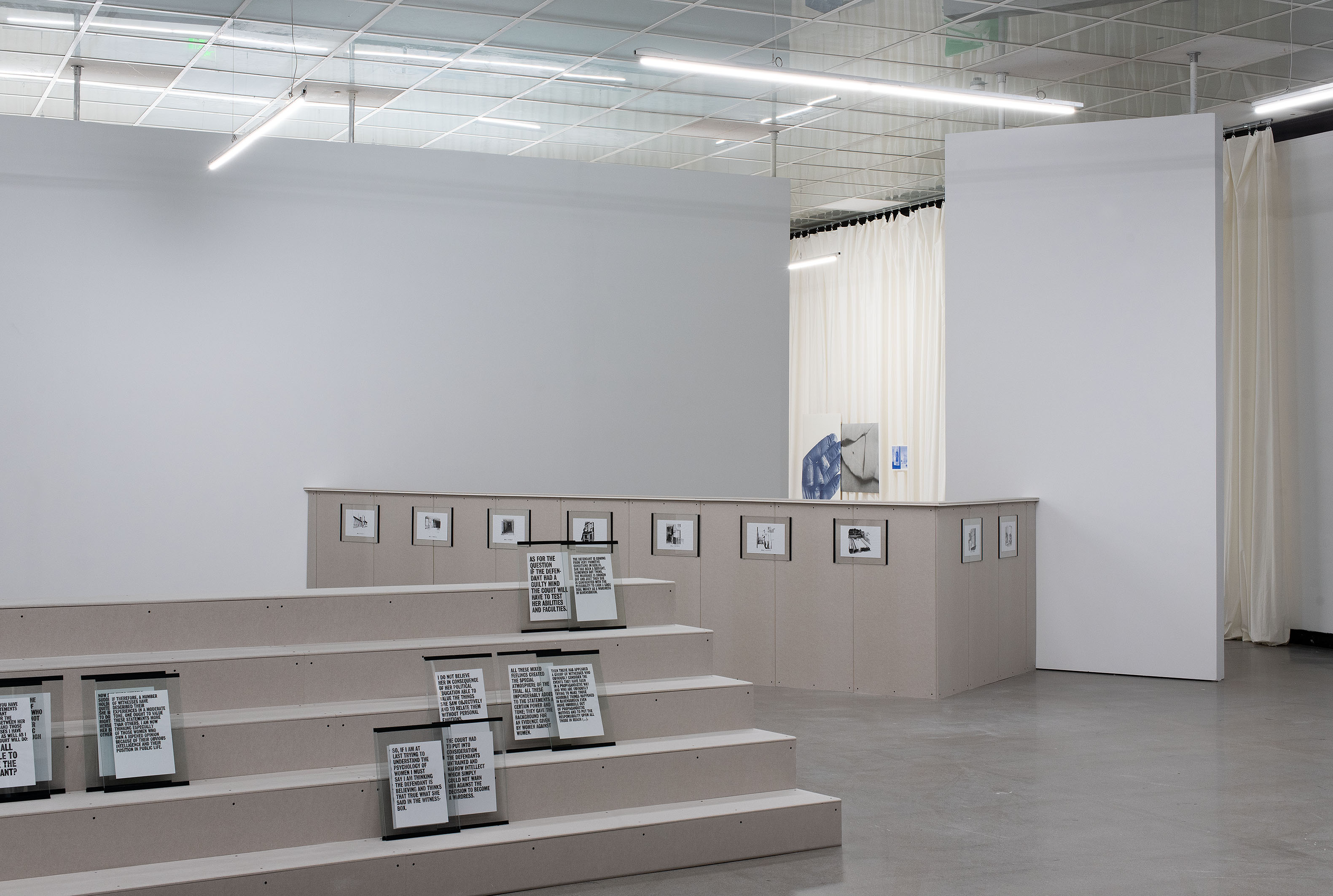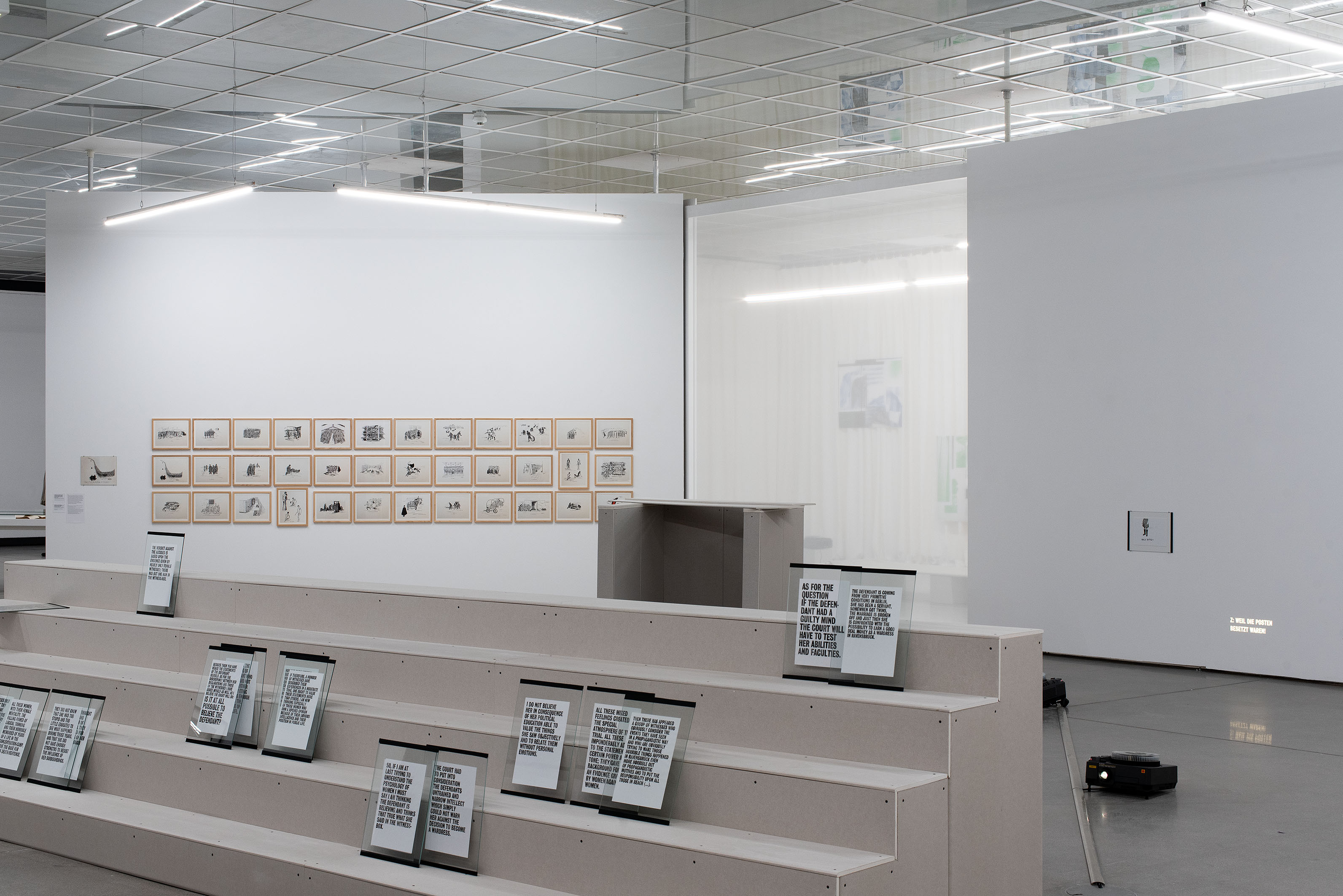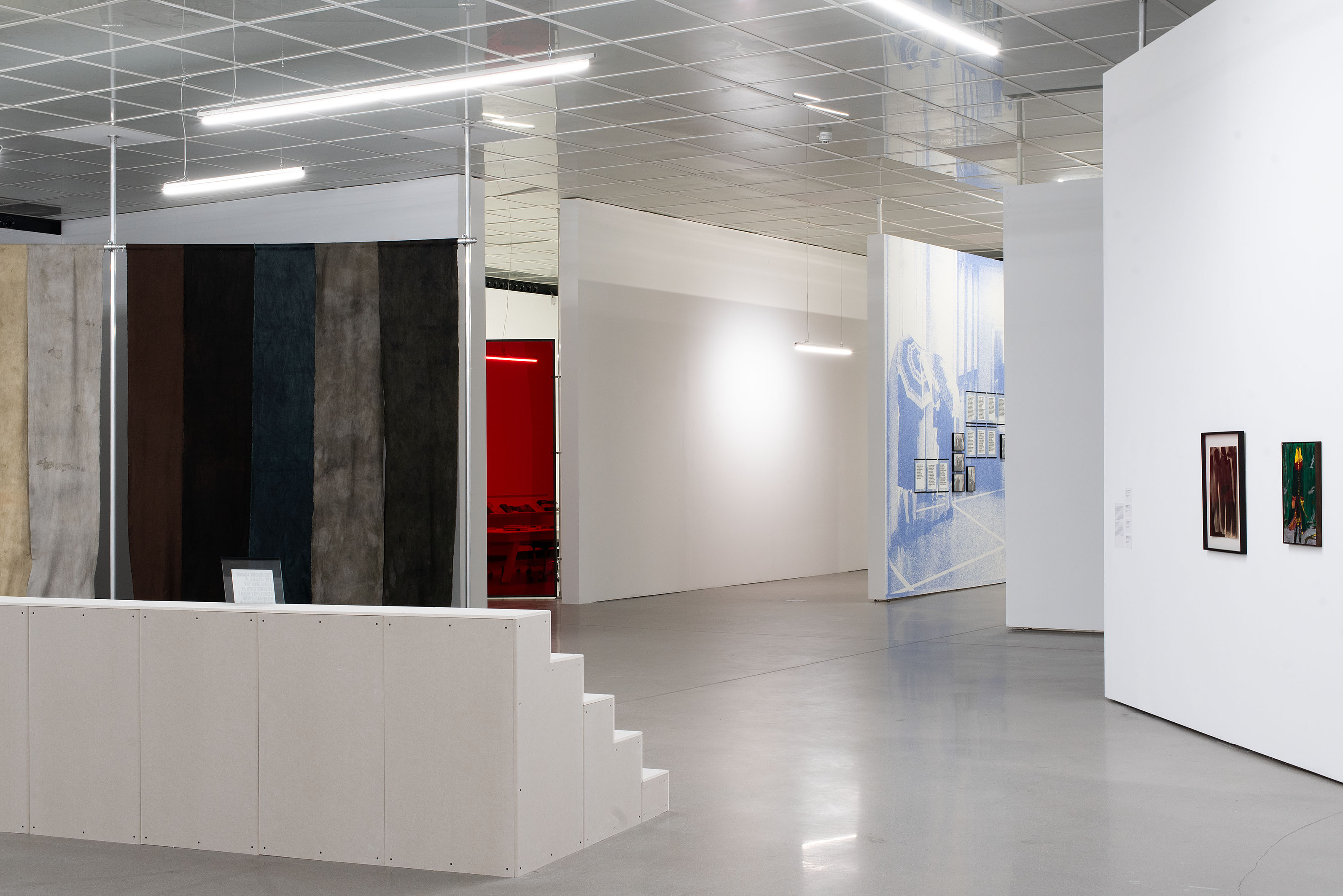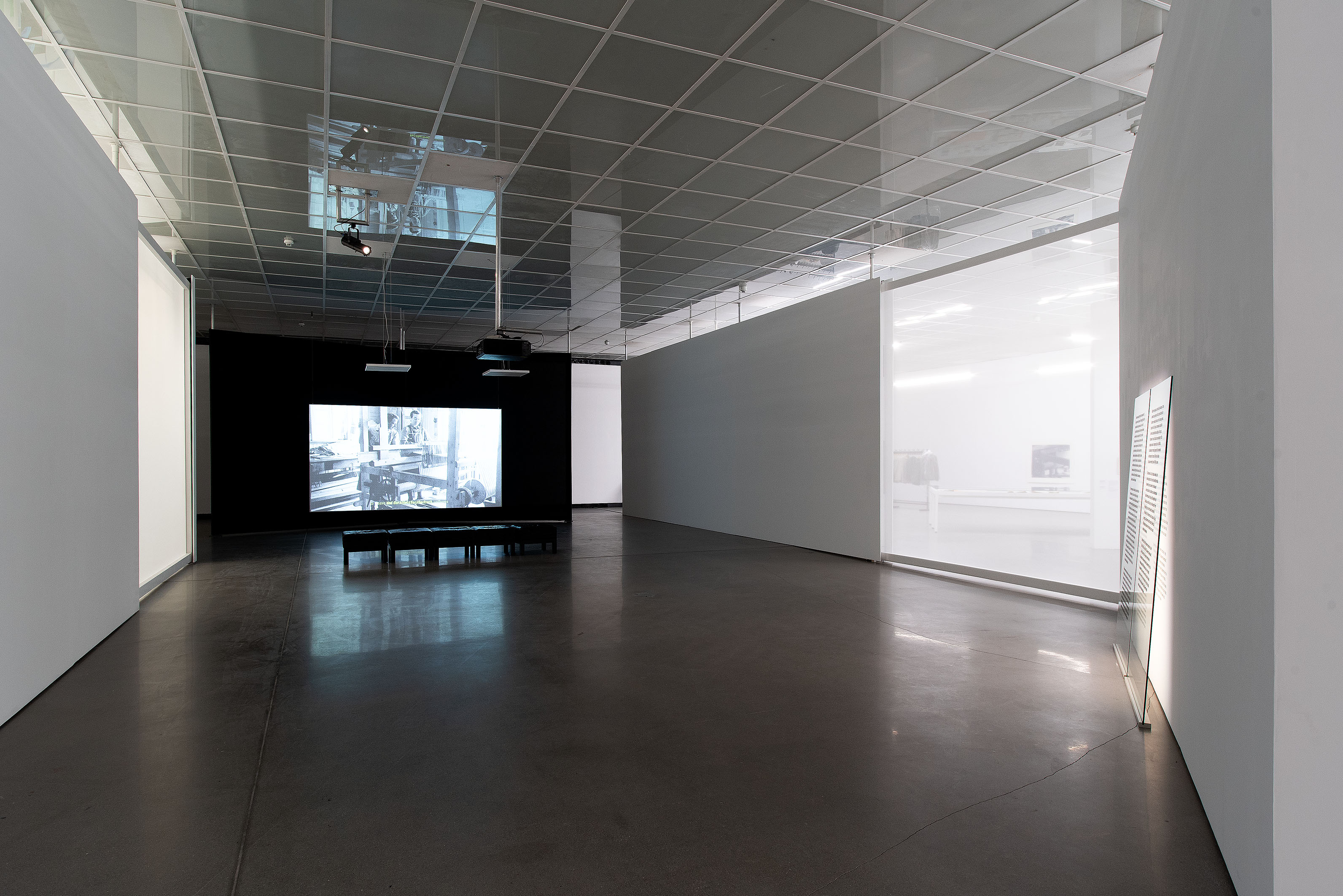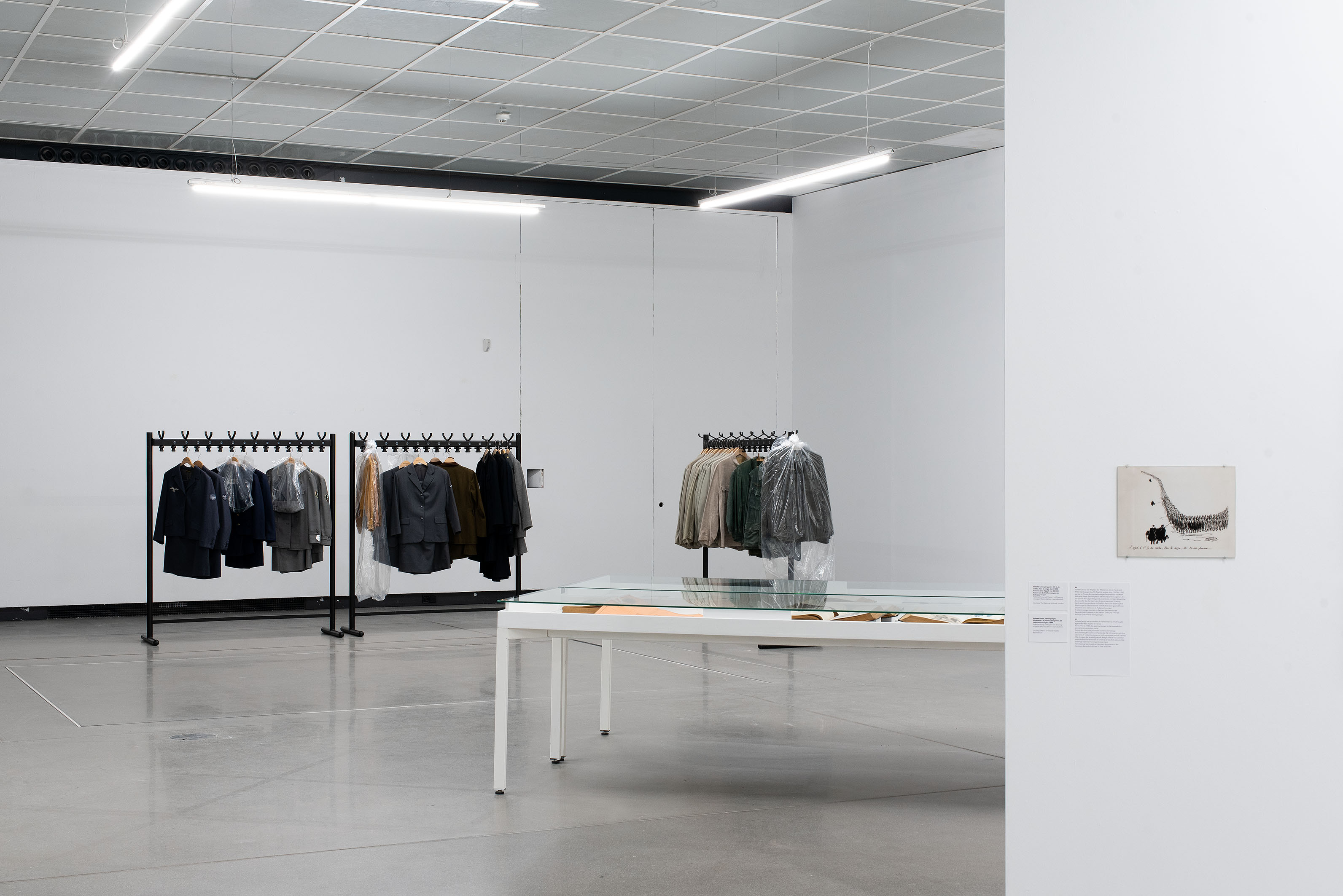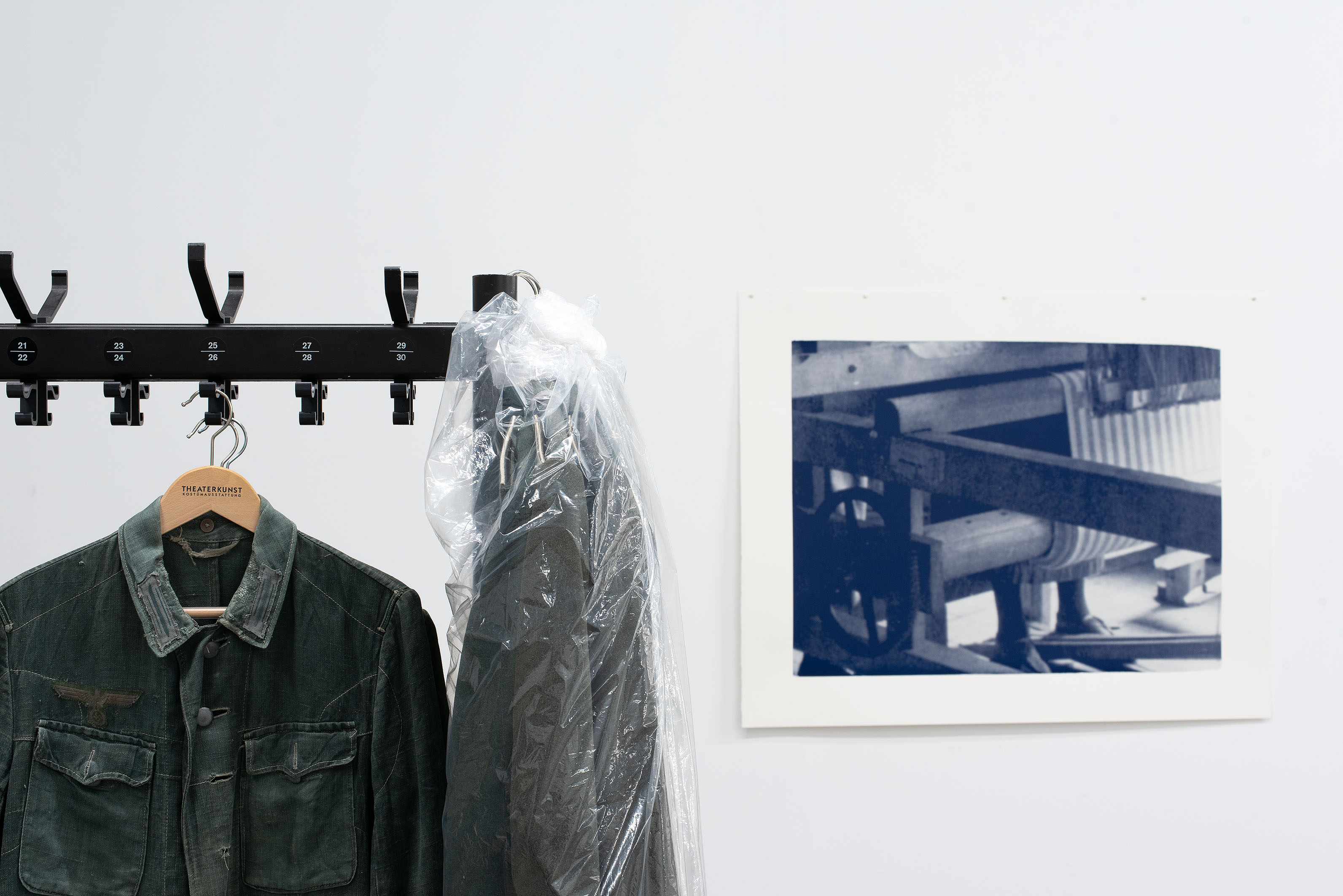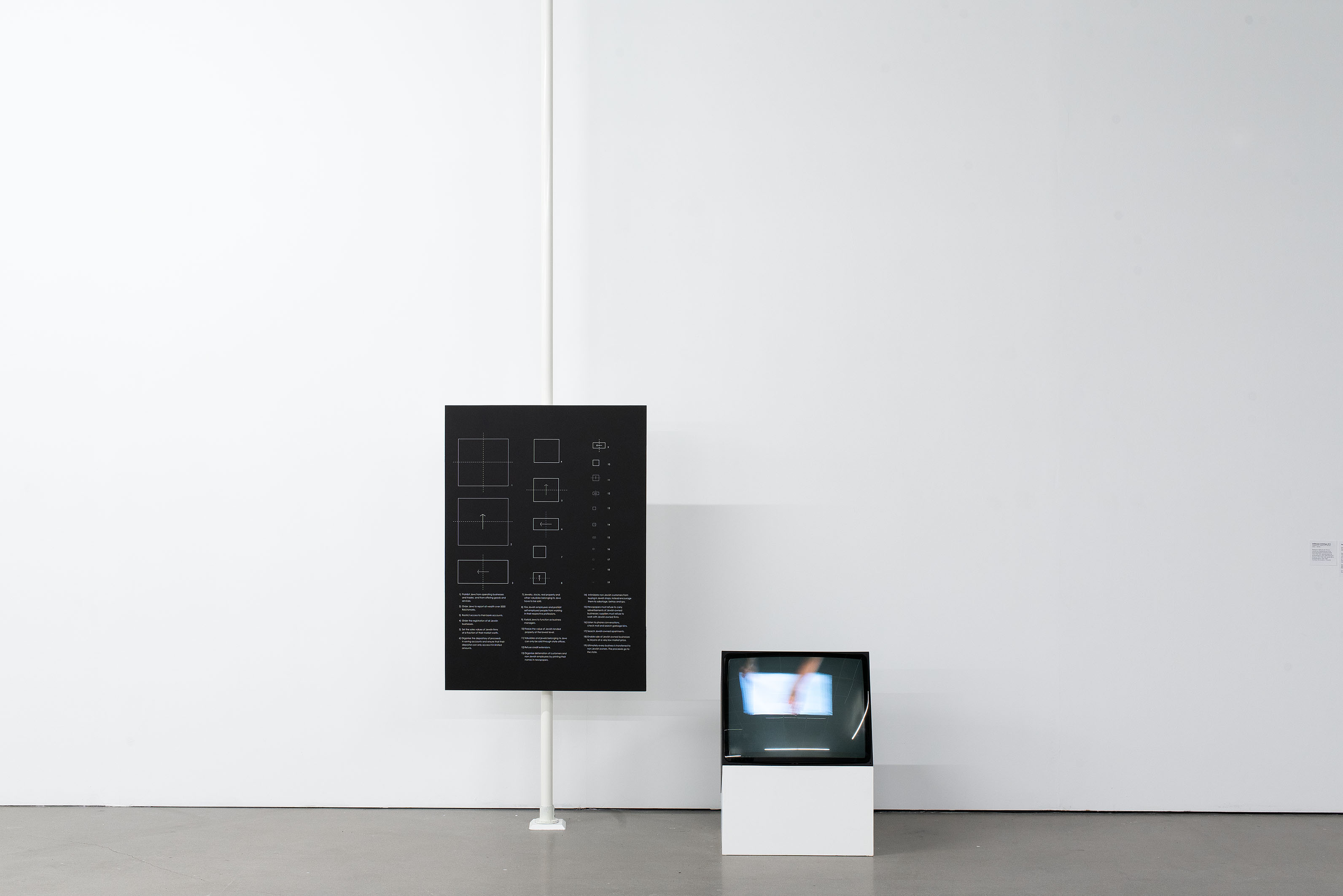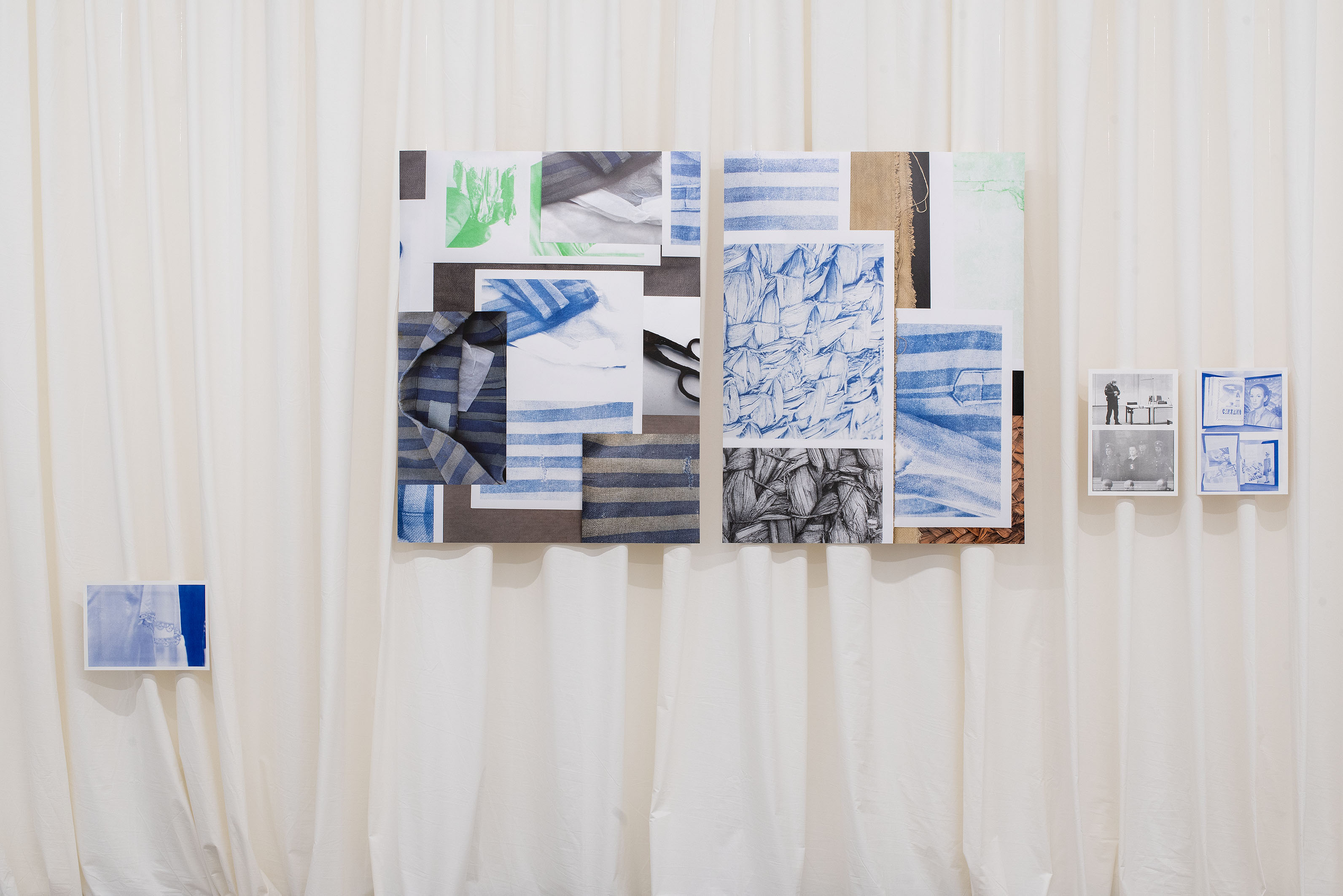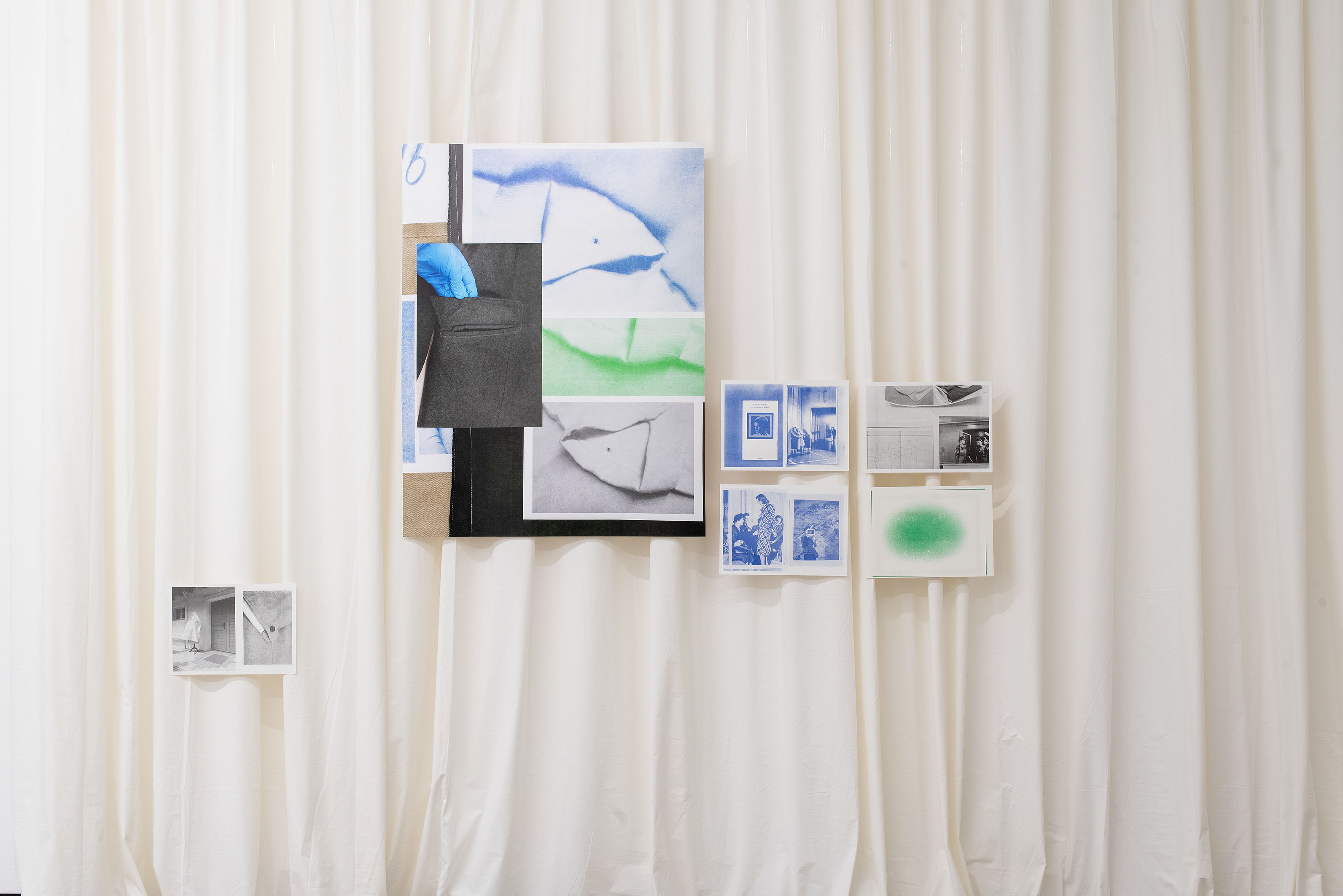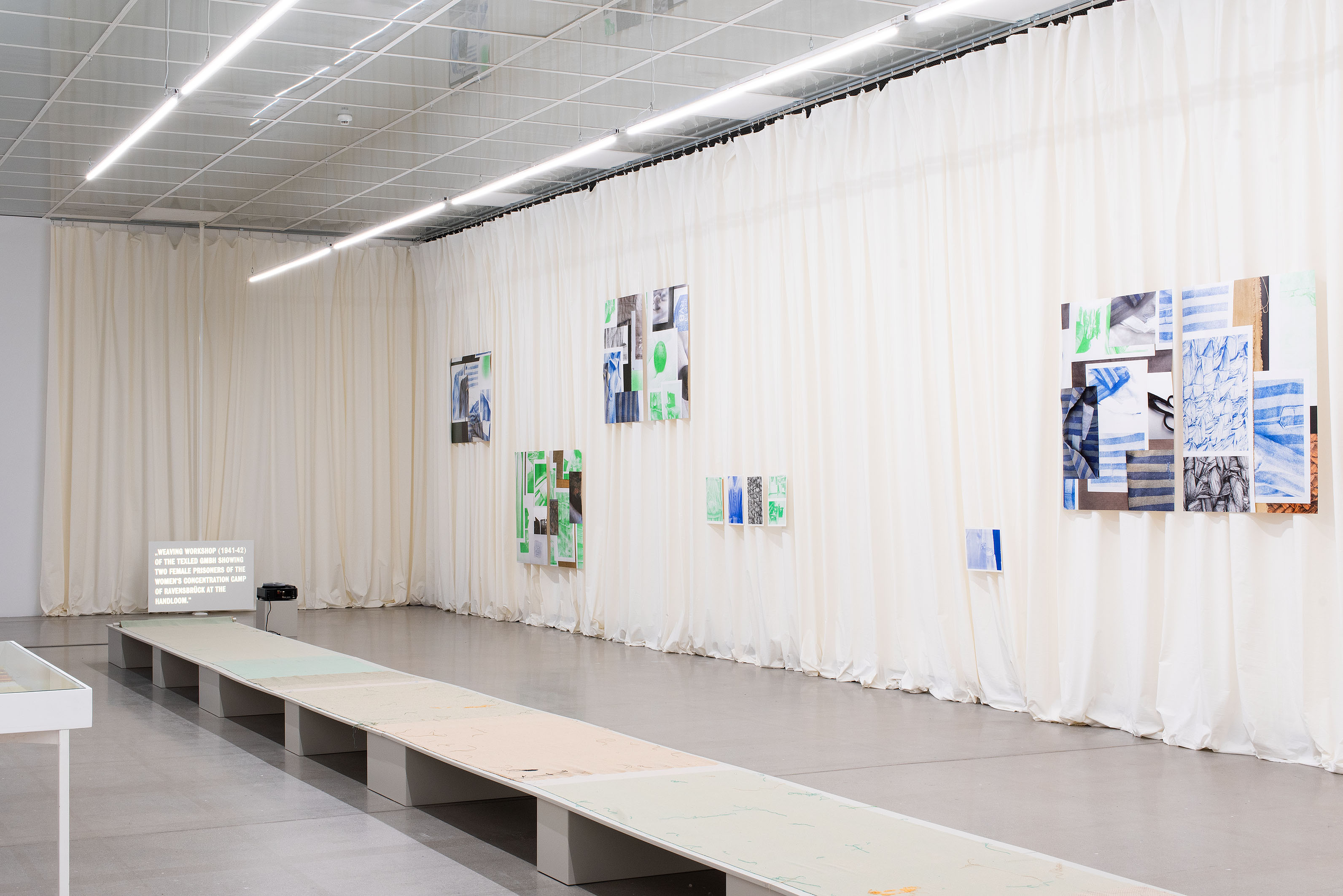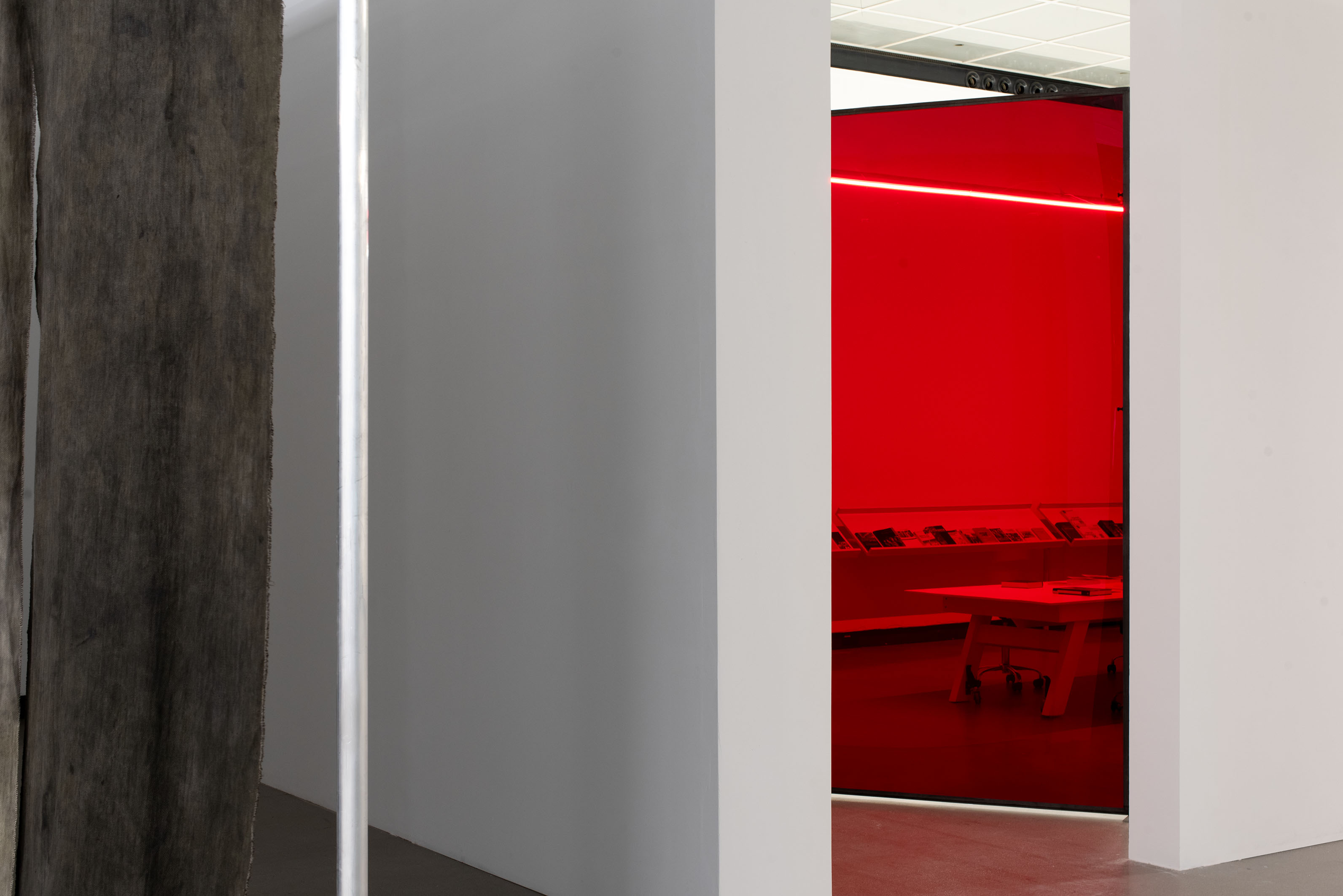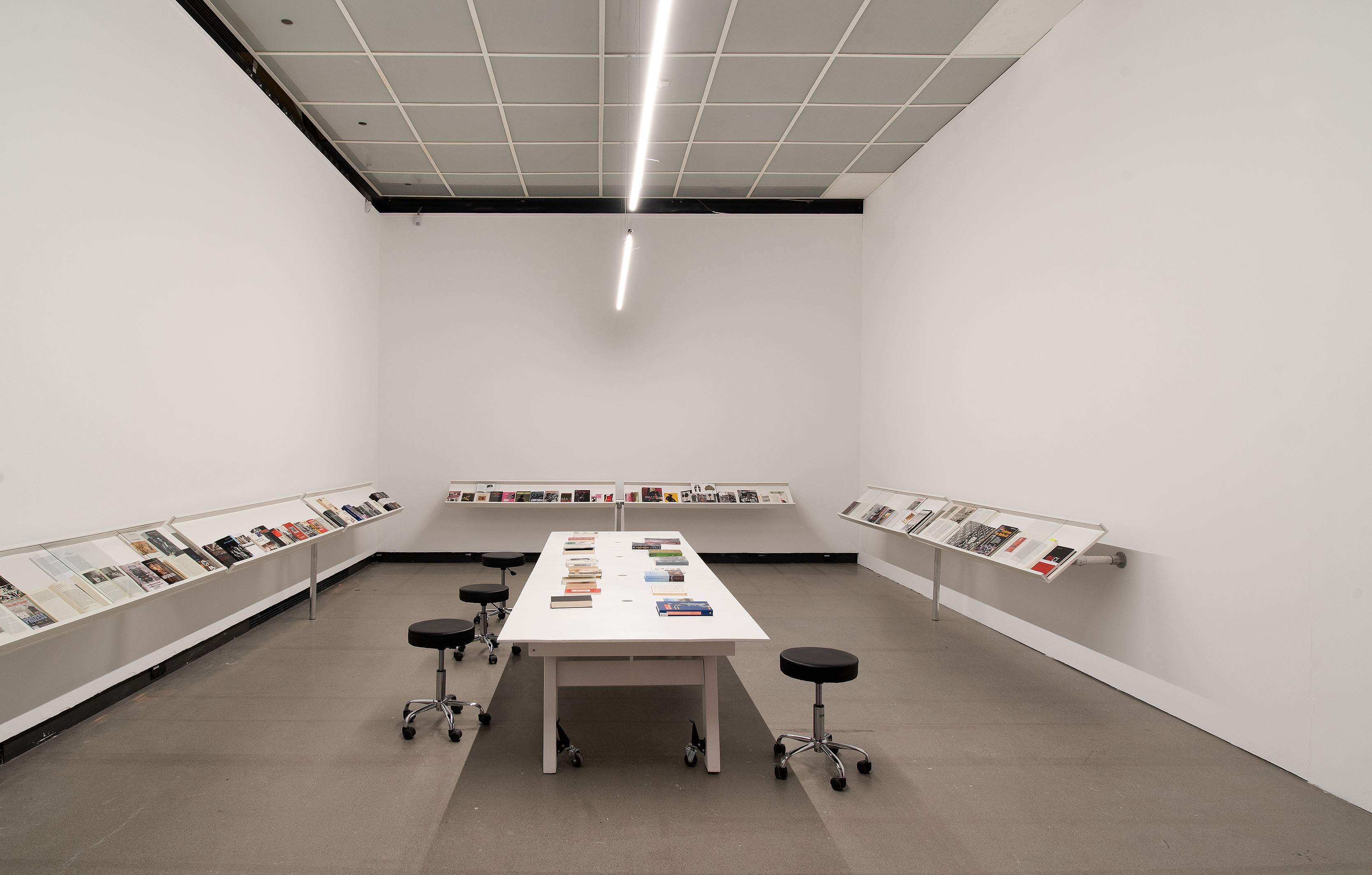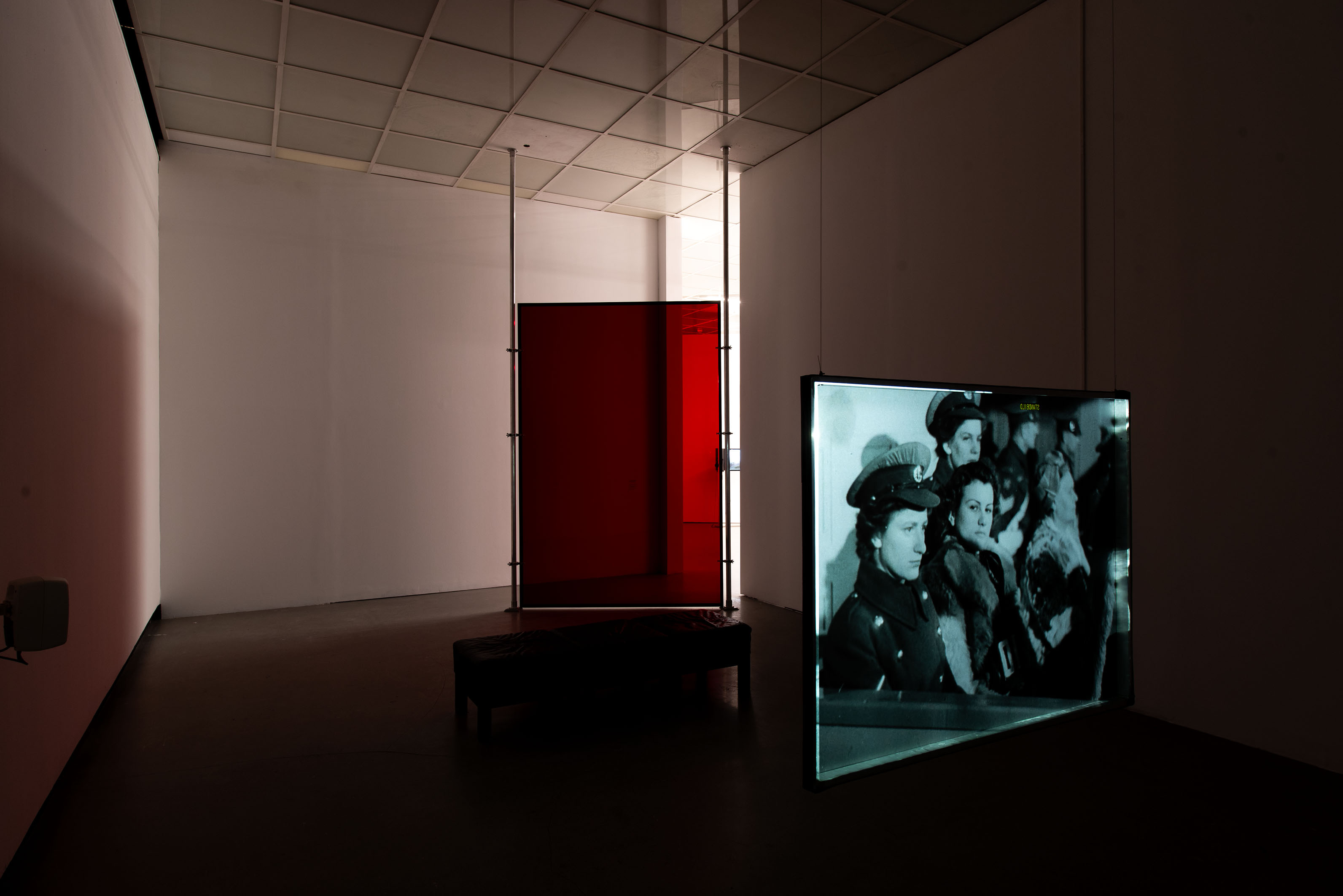Artist Dominique Hurth has developed her long-term artistic research project on female perpetrators of Nazi crimes into a new presentation for the Württembergischer Kunstverein. The starting point is the figure of the female guard at the Ravensbrück Women’s Concentration Camp. The title refers to an order issued by camp commandant Max Koegel in 1942.
Between 1939 and 1945, around 3.340 mostly young women worked as guards at Ravensbrück, which also served as the central training site for female camp guards for all concentration camps. They were contractually subordinate to the SS and received privileges and a certain degree of independence in return for their often violent work.
In the exhibition, Hurth focuses on three central aspects: the uniforms of the female concentration camp guards, textile production in Ravensbrück, and the Nazi war crimes trials in Lüneburg (Belsen Trial, 1945), Hamburg (Ravensbrück Trials, 1947–1948), and Düsseldorf (Majdanek Trial, 1976-1981).
The uniforms are examined in terms of their representation of gender and status, as well as their interrelationships with contemporary fashion and the fashion industry. These, along with prisoner clothing and frontline uniforms, were produced in Ravensbrück under conditions of forced labor, which Hurth explores in terms of their economic, logistical, and violent dimensions. Finally, the Nazi trials immediately after the Second World War and again in the early 1980s provide insights into both society’s treatment of and the self-representation of female Nazi perpetrators—a topic that remains largely taboo to this day. Hurth approaches the court proceedings through language, architecture, and photographic documentation.
Designed as an overall installation, the exhibition presents both existing elements and new works. It includes textile and architectural installations that reference, among other things, a loom or courtroom, drawings, texts, slide and video projections, and historical documents. It also displays a selection of drawings and paintings by Violette Lecoq and Ceija Stojka, who were prisoners in Ravensbrück. Together, these elements form a multi-layered narrative about female perpetrators, enabling an empathic yet critical engagement with the subject.
Between 1939 and 1945, around 3.340 mostly young women worked as guards at Ravensbrück, which also served as the central training site for female camp guards for all concentration camps. They were contractually subordinate to the SS and received privileges and a certain degree of independence in return for their often violent work.
In the exhibition, Hurth focuses on three central aspects: the uniforms of the female concentration camp guards, textile production in Ravensbrück, and the Nazi war crimes trials in Lüneburg (Belsen Trial, 1945), Hamburg (Ravensbrück Trials, 1947–1948), and Düsseldorf (Majdanek Trial, 1976-1981).
The uniforms are examined in terms of their representation of gender and status, as well as their interrelationships with contemporary fashion and the fashion industry. These, along with prisoner clothing and frontline uniforms, were produced in Ravensbrück under conditions of forced labor, which Hurth explores in terms of their economic, logistical, and violent dimensions. Finally, the Nazi trials immediately after the Second World War and again in the early 1980s provide insights into both society’s treatment of and the self-representation of female Nazi perpetrators—a topic that remains largely taboo to this day. Hurth approaches the court proceedings through language, architecture, and photographic documentation.
Designed as an overall installation, the exhibition presents both existing elements and new works. It includes textile and architectural installations that reference, among other things, a loom or courtroom, drawings, texts, slide and video projections, and historical documents. It also displays a selection of drawings and paintings by Violette Lecoq and Ceija Stojka, who were prisoners in Ravensbrück. Together, these elements form a multi-layered narrative about female perpetrators, enabling an empathic yet critical engagement with the subject.
Private Handbags May Not Be Carried When On Duty. (“Privathandtaschen dürfen zum Außendienst nicht mitgetragen werden”)
Solo Exhibition at Württembergischer Kunstverein, Stuttgart
October 18th 2025 - January 26th 2026
Funded by:
Ministerium für Wissenschaft, Forschung und Kunst des Landes Baden-Württemberg; Kulturamt der Stadt Stuttgart; Wüstenrot Stiftung; Büro für Bildende Kunst des Institut français Deutschland; Kulturstiftung der LBBW; Pro Lab, Stuttgart
Loaners:
Bundesarchiv Berlin
Imperial War Museum
Mahn- und Gedenkstätte Ravensbrück, Stiftung Brandenburgische Gedenkstätten
Staatsbibliothek zu Berlin
Staatstheater Stuttgart
Stiftung Kai Dikhas, Sammlung Kai Dikhas
Theater Kunst Berlin
Württembergische Landesbibliothek Stuttgart
Installation Views: Hans D. Christ, WKV
Solo Exhibition at Württembergischer Kunstverein, Stuttgart
October 18th 2025 - January 26th 2026
Funded by:
Ministerium für Wissenschaft, Forschung und Kunst des Landes Baden-Württemberg; Kulturamt der Stadt Stuttgart; Wüstenrot Stiftung; Büro für Bildende Kunst des Institut français Deutschland; Kulturstiftung der LBBW; Pro Lab, Stuttgart
Loaners:
Bundesarchiv Berlin
Imperial War Museum
Mahn- und Gedenkstätte Ravensbrück, Stiftung Brandenburgische Gedenkstätten
Staatsbibliothek zu Berlin
Staatstheater Stuttgart
Stiftung Kai Dikhas, Sammlung Kai Dikhas
Theater Kunst Berlin
Württembergische Landesbibliothek Stuttgart
Installation Views: Hans D. Christ, WKV
